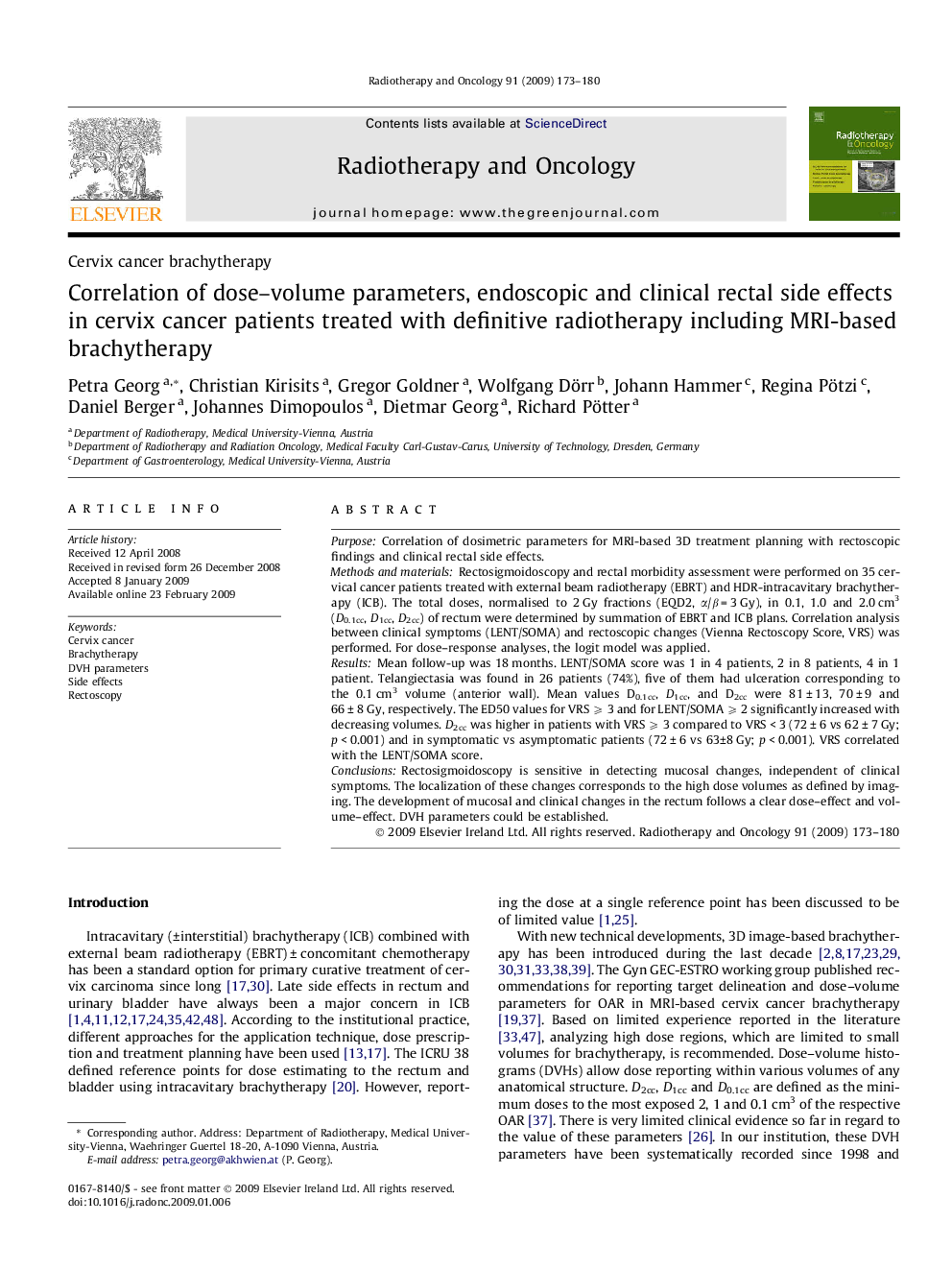| Article ID | Journal | Published Year | Pages | File Type |
|---|---|---|---|---|
| 2159265 | Radiotherapy and Oncology | 2009 | 8 Pages |
PurposeCorrelation of dosimetric parameters for MRI-based 3D treatment planning with rectoscopic findings and clinical rectal side effects.Methods and materialsRectosigmoidoscopy and rectal morbidity assessment were performed on 35 cervical cancer patients treated with external beam radiotherapy (EBRT) and HDR-intracavitary brachytherapy (ICB). The total doses, normalised to 2 Gy fractions (EQD2, α/β = 3 Gy), in 0.1, 1.0 and 2.0 cm3 (D0.1cc, D1cc, D2cc) of rectum were determined by summation of EBRT and ICB plans. Correlation analysis between clinical symptoms (LENT/SOMA) and rectoscopic changes (Vienna Rectoscopy Score, VRS) was performed. For dose–response analyses, the logit model was applied.ResultsMean follow-up was 18 months. LENT/SOMA score was 1 in 4 patients, 2 in 8 patients, 4 in 1 patient. Telangiectasia was found in 26 patients (74%), five of them had ulceration corresponding to the 0.1 cm3 volume (anterior wall). Mean values D0.1cc, D1cc, and D2cc were 81 ± 13, 70 ± 9 and 66 ± 8 Gy, respectively. The ED50 values for VRS ⩾ 3 and for LENT/SOMA ⩾ 2 significantly increased with decreasing volumes. D2cc was higher in patients with VRS ⩾ 3 compared to VRS < 3 (72 ± 6 vs 62 ± 7 Gy; p < 0.001) and in symptomatic vs asymptomatic patients (72 ± 6 vs 63±8 Gy; p < 0.001). VRS correlated with the LENT/SOMA score.ConclusionsRectosigmoidoscopy is sensitive in detecting mucosal changes, independent of clinical symptoms. The localization of these changes corresponds to the high dose volumes as defined by imaging. The development of mucosal and clinical changes in the rectum follows a clear dose–effect and volume–effect. DVH parameters could be established.
